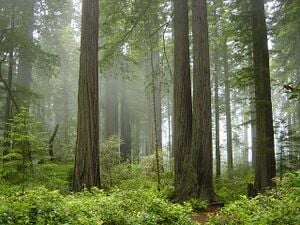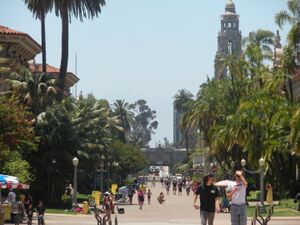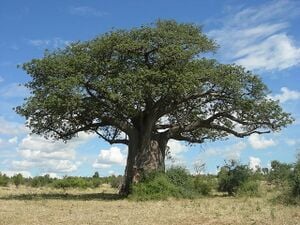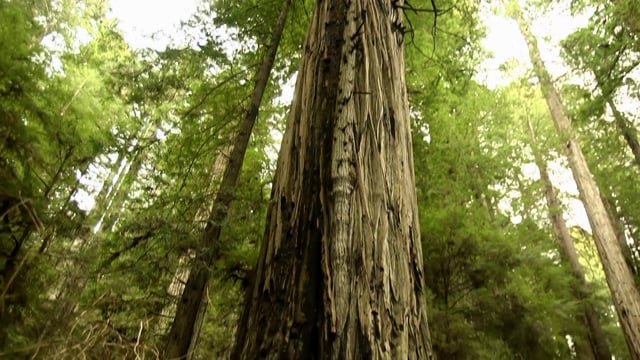What we are doing to the forests of the world is but a mirror reflection of what we are doing to ourselves and to one another.

 As the First Nations know, forests are ‘music to the soul’, positive.news (Apr 03, 2024)
As the First Nations know, forests are ‘music to the soul’, positive.news (Apr 03, 2024)  From ashes to action: how global mapping illuminates forest conservation's path, north-arrow.org (Apr 02, 2024)
From ashes to action: how global mapping illuminates forest conservation's path, north-arrow.org (Apr 02, 2024)  ‘Climate-smart’ acres to expand via new U.S. agroforestry project, news.mongabay.com (Mar 25, 2024) — Agroforestry practices are effective at capturing carbon while providing additional commodities and land benefits to farmers
‘Climate-smart’ acres to expand via new U.S. agroforestry project, news.mongabay.com (Mar 25, 2024) — Agroforestry practices are effective at capturing carbon while providing additional commodities and land benefits to farmers
Forests cover one third of the earth's land mass, performing vital functions and services around the world which make our planet alive with possibilities. In fact, 1.6 billion people depend on forests for their livelihoods. They play a key role in our battle against climate change, releasing oxygen into the atmosphere while storing carbon dioxide.
Forests feed our rivers and are essential to supplying the water for nearly 50% of our largest cities. They create and maintain soil fertility and they help to regulate the often devastating impact of storms, floods and fires.
Splendid and inspiring, forests are the most biologically diverse ecosystems on land, and are home to more than half of the terrestrial species of animals, plants and insects.
Forests also provide shelter, jobs, security and cultural relevance for forest-dependent populations. They are the green lungs of the earth, vital to the survival of people everywhere - all seven billion of us.

Forests embody so much of what is good and strong in our lives. Yet despite all of these priceless ecological, economic, social and health benefits, we are destroying the very forests we need to live and breathe.
Global deforestation continues at an alarming rate - every year 13 million hectares of forest are destroyed. That's equal to the size of Portugal.
Short-term investments for immediate gains (i.e. logging) compound these losses. People who depend on forests for their livelihoods are struggling to survive. Many precious species face extinction. Biodiversity is being obliterated. What's more, economists around the world have proven that by not integrating the values of forests into their budgets, countries and businesses are paying a high price. One that ultimately impoverishes us all as harm to our forest life-support system continues each and every single day.
But this trend is not irreversible. It's not too late to transform life as we know it into a greener future where forests are at the heart of our sustainable development and green economies.

Conserving forests and expanding them need to be recognized as a business opportunity. When we add it up, an investment of US$30 billion fighting deforestation and degradation could provide a return of US$2.5 trillion in new products and services.
Furthermore, targeted investments in forestry could generate up to 10 million new jobs around the world. Already, many leaders are glimpsing the potential for renewable energy and nature-based assets, but for transformation to happen, forests need to become a universal political priority.
The services forests provide are essential to every aspect of our quality of life and individual action can result in exponential impact, so do your part![1]
Community action projects[edit | edit source]
- tree planting and Reforestation initiatives
- Community orchards
- Community woodlands
- Nature trails incorporating trees, woodland or forest
Events[edit | edit source]
 Jun 22, 2023 (Thu) — World Rainforest Day, worldrainforestday.org
Jun 22, 2023 (Thu) — World Rainforest Day, worldrainforestday.org
 Mar 21, 2024 (Thu) — International Day of Forests, fao.org
Mar 21, 2024 (Thu) — International Day of Forests, fao.org May 6 - 12, 2024 (Mon - Sun) — Screen-Free Week
May 6 - 12, 2024 (Mon - Sun) — Screen-Free Week May 22, 2024 (Wed) — International Day for Biological Diversity
May 22, 2024 (Wed) — International Day for Biological Diversity Jun 05, 2024 (Wed) — World Environment Day
Jun 05, 2024 (Wed) — World Environment Day Dec 11, 2024 (Wed) — International Mountain Day
Dec 11, 2024 (Wed) — International Mountain Day
Reforestation[edit | edit source]
Reforestation is the practice of restoring previously existing forests and woodlands that have been destroyed or damaged. The prior forest destruction might have happened through deforestation, clearcutting or wildfires. Two important purposes of reforestation programs are for harvesting of wood or for climate change mitigation purposes. Reforestation can also help with ecosystem restoration. One method for reforestation is to establish tree plantations, also called plantation forests. They cover about 131 million ha worldwide, which is 3 percent of the global forest area and 45 percent of the total area of planted forests.
Globally, planted forests increased from 4.1% to 7.0% of the total forest area between 1990 and 2015. Plantation forests made up 280 million ha (hectare) in 2015, an increase of about 40 million ha in the last ten years. Globally, planted forests consist of about 18% exotic or introduced species while the rest are species native to the country where they are planted.
There are limitations and challenges with reforestation projects, especially if they are in the form of tree plantations. Firstly, there can be competition with other land uses and displacement risk. Secondly, tree plantations are often monocultures which comes with a set of disadvantages, for example biodiversity loss. Lastly, there is also the problem that stored carbon is released at some point.
The effects of reforestation and afforestation will be farther in the future than those of proforestation (the conservation of intact forests). Instead of planting entirely new areas, it might be better to reconnect forested areas and restoring the edges of forest. This protects their mature core and makes them more resilient and longer-lasting. It takes much longer − several decades − for the carbon sequestration benefits of reforestation to become similar to the those from mature trees in tropical forests. Therefore, reducing deforestation is usually more beneficial for climate change mitigation than reforestation.
Many countries carry out reforestation programs. For example in China, the Three Northern Protected Forest Development Program – informally known as the "Great Green Wall" – was launched in 1978 and scheduled to last until 2050. It aims to eventually plant nearly 90 million acres of new forest in a 2,800-mile stretch of northern China.
Resources[edit | edit source]
Video[edit | edit source]
Networks[edit | edit source]
- 1t.org, platform to help with "the conservation and restoration of one trillion trees within this decade."
- Rainforest Action Network, environmental organization based in San Francisco, California, USA. W
Citizens data initiative[edit | edit source]
Worldwide, some 60 million indigenous people are almost completely reliant on forest resources for their livelihoods - for food and fuel, medicines and materials.[2]
Between 1990 and 2005 the rate of deforestation averaged 13 million hectares, mostly in the Tropics.[3]
Greenhouse gas emissions with felling, slash and burn agriculture and other deforestation effects, account for around 17 per cent or more of global emissions-the second largest source after the energy sector.[4]
Maps for community action[edit | edit source]
- Global Forest Watch map, added 17:59, 12 April 2024 (UTC)
- Treepedia
Research[edit | edit source]
Center for International Forestry Research conducts research on the use and management of forests in less-developed countries. W
World Agroforestry Centre, international institute headquartered in Nairobi, Kenya, and founded in 1978. The Centre specializes in the sustainable management, protection and regulation of tropical rainforest and natural reserves. It is one of 15 agricultural research centres which makes up the global network known as the CGIAR (Consultative Group on International Agricultural Research). The Centre conducts research in agroforestry, in partnership with national agricultural research systems with a view to developing more sustainable and productive land use. The focus of its research is countries/regions in the developing world, particular in the tropics of Central and South America, Southeast Asia and parts of central Africa. W
Other resources[edit | edit source]
Organisations working with communities[edit | edit source]
- Forest Peoples Programme, "human rights organisation working with forest peoples across the globe to secure their rights to their lands and their livelihoods. We work alongside more than 60 partner organisations representing indigenous peoples and forest communities from across the globe." added 21:16, 19 October 2022 (UTC)
Forests and health[edit | edit source]
Natural forest regeneration[edit | edit source]
section needed, sample ref:[5]
Assisted natural regeneration[edit | edit source]
Assisted natural regeneration (ANR) (also termed managed regrowth) is the human protection and preservation of natural tree seedlings in forested areas. Seedlings are, in particular, protected from undergrowth and extremely flammable plants such as Imperata grass. Though there is no formal definition or methodology, the overall goal of ANR is to create and improve forest productivity. It typically involves the reduction or removal of barriers to natural regeneration such as soil degradation, competition with weeds, grasses or other vegetation, and protection against disturbances, which can all interfere with growth. In addition to protection efforts, new trees are planted when needed or wanted (enrichment planting). With ANR, forests grow faster than they would naturally, resulting in a significant contribution to carbon sequestration efforts. It also serves as a cheaper alternative to reforestation due to decreased nursery needs.
The most effective way to implement ANR is very site-specific, and many nations provide guidebooks on how to select and maintain an ANR project.
Temperate rainforests[edit | edit source]
Temperate rainforests are rainforests with coniferous or broadleaf forests that occur in the temperate zone and receive heavy rain.
Temperate rainforests occur in oceanic moist regions around the world: the Pacific temperate rainforests of North American Pacific Northwest as well as the Appalachian temperate rainforest in the Appalachian region of the United States; the Valdivian temperate rainforests of southwestern South America; the rainforests of New Zealand and southeastern Australia; northwest Europe (small pockets in Great Britain and larger areas in Ireland, southern Norway and northern Iberia); southern Japan; the Black Sea–Caspian Sea region from the southeasternmost coastal zone of the Bulgarian coast, through Turkey, to Georgia, and northern Iran.
The moist conditions of temperate rainforests generally support an understory of mosses, ferns and some shrubs and berries. Temperate rainforests can be temperate coniferous forests or temperate broadleaf and mixed forests.
Campaigns[edit | edit source]
- Greenpeace petition, save the Great Northern Forest
- The Trillion Tree Campaign is a project announced at the 2020 World Economic Forum in Davos which aims to plant one trillion trees worldwide by the end of the decade. It is looking to repopulate the world's trees and combat climate change as a nature-based solution.
- The campaign is a continuation of the activities of the earlier Billion Tree Campaign, instigated by Wangari Maathai, who founded the Green Belt Movement in Africa in 1977. W
See also[edit | edit source]
- Biodiversity
- Climate action
- Environment quality
- Open spaces
- Rural sustainability
- Urban sustainability
- category:Forestry
- category:Trees
local information can be found, or shared, via our many location pages
External links
- Wikipedia:
- Forests W, Reforestation W, Sustainable forest management W, List of forests W, Rainforest W, List of trees W, Forests Now Declaration W, United Nations Billion Tree Campaign W, Deforestation W
- Greenlivingpedia:
- Archangel Ancient Tree Archive
- Rights and Resources Initiative, non-governmental organization working to encourage forest tenure and policy reforms and the transformation of the forest economy so that business reflects local development agendas and supports local livelihoods. RRI works at the country, regional and global levels, collaborating on research, advocacy and convening strategic actors. W
- Forests, information from United Nations Environment Programme
- Rainforest Portal
- UN Forum on Forests
- Trees for Cities W
- Trees for the Future, Maryland-based nonprofit organization founded in 1989 that helps communities around the world plant trees. Through seed distribution, agroforestry training, and in-country technical assistance, it has empowered rural groups to restore tree cover to their lands, protect the environment and help to preserve traditional livelihoods and cultures for generations. W
- Tree forumsat permies.com
- Woodland forumsat Permies.com
References
- ↑ unep.org, 22 February 2011
- ↑ Source: FOEI's The Tyranny of Free Trade: wasted natural wealth and lost livelihoods, December 2005, www.foei.org/publications/index.html, link not found, August 2015
- ↑ Source: UNEP, September 2008
- ↑ Source: UNEP, September 2008
- ↑ bbc.com/future




